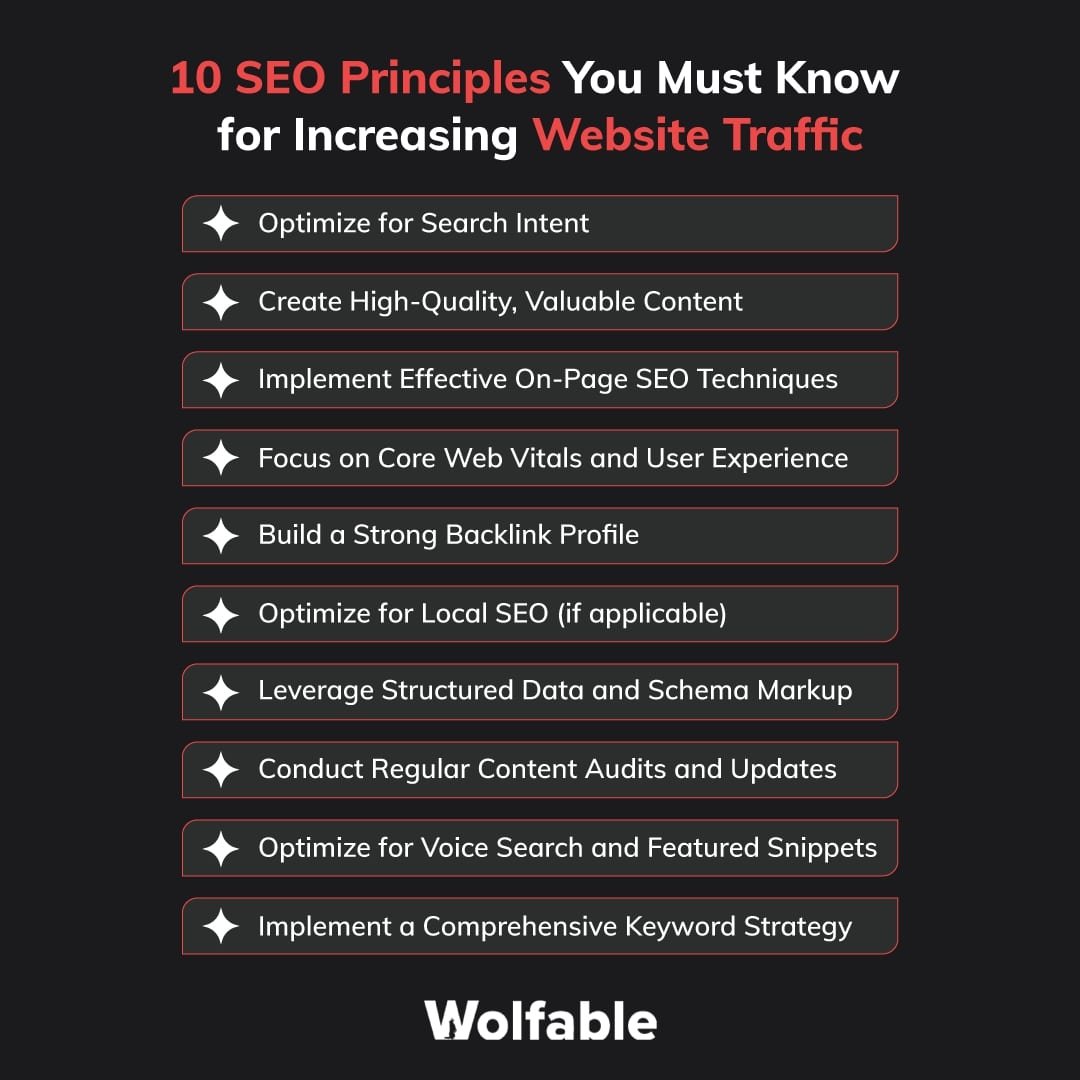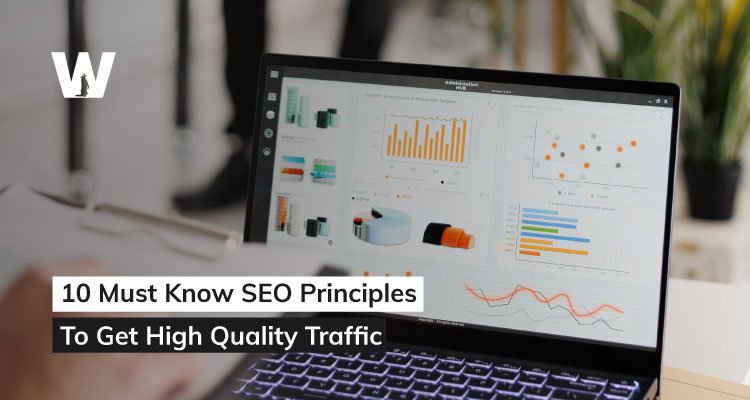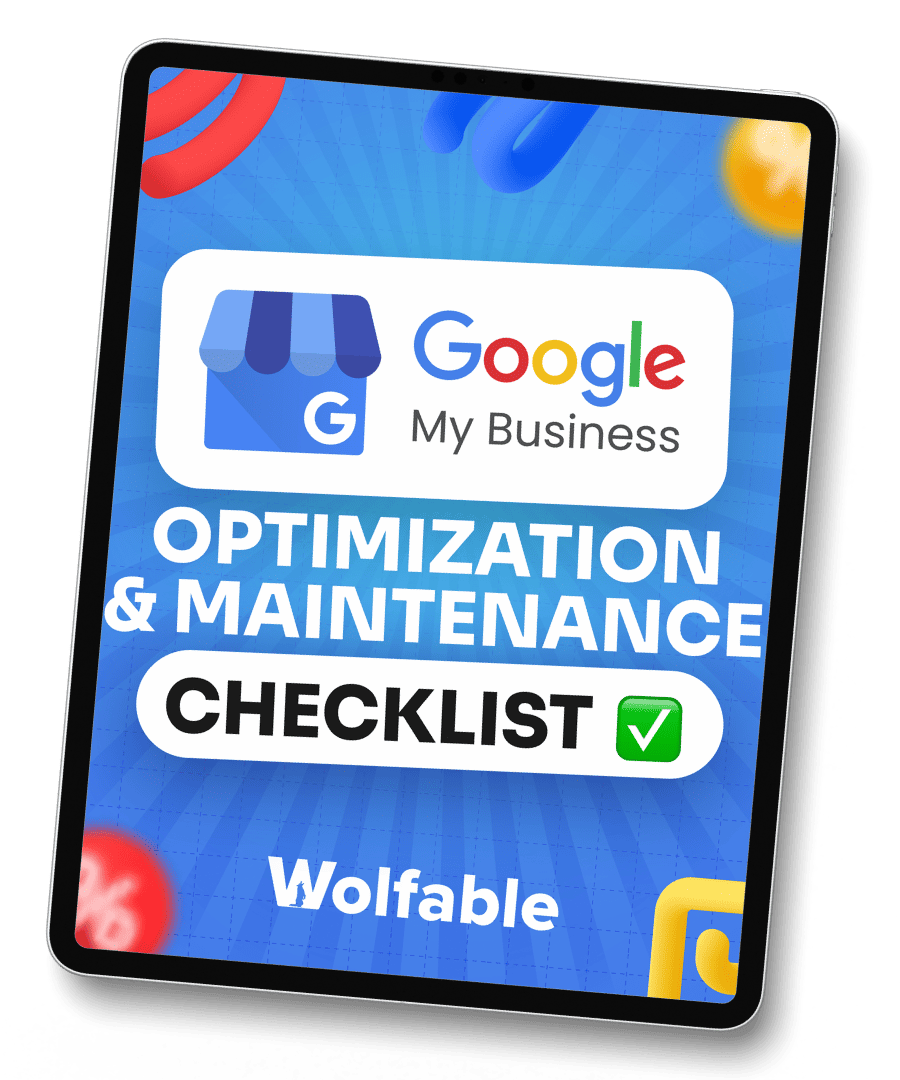Wraps up in 5 Minutes
Nowadays, having a great website isn't enough. To truly succeed online, you need to make sure people can find your site.
That's where Search Engine Optimization (SEO) comes in.
Well, SEO is the process of aligning your website to rank better on a search engine results page so that more visitors come to your website. Simply put, it helps to make your website more visible and attractive to search engines like Google, Bing, and others.
But how do these search engines work?
Well, they basically crawl the vast library of the internet, indexing and categorizing every page they find. When someone searches for information, these search engines quickly sift through their extensive catalog to present the most relevant results.
Now, SEO isn’t what it once used to be. Gone are the days when stuffing your pages with keywords could shoot you to the top of search results. Search engines have gotten smarter, and SEO has evolved along with them. Today, it's all about providing value to your visitors and creating a seamless user experience.
That's why we're here today. In this post, we're going to dive into 10 must-know SEO principles that will help you attract high-quality traffic to your website.
10 SEO Principles You Must Know for Increasing Website Traffic
Here are the 10 basic and key SEO principles you should learn if you want to increase your website visibility and drive more quality traffic to your website.

1. Optimize for Search Intent
Have you ever searched for something online and found exactly what you were looking for on the first try? That's the magic of search intent optimization at work. Understanding and catering to search intent is like being a mind reader – you're anticipating what your visitors want before they even reach your site.
So, what exactly is search intent? It's the purpose behind a user's search query. Generally, it falls into four categories:
- Informational: When someone wants to learn about a topic.
- Navigational: When someone is looking for a specific website or page.
- Transactional: When someone wants to make a purchase.
- Commercial: When someone is researching products or services before buying.
To align your content with search intent, you need to put yourself in your visitors' shoes.
Ask yourself: What are they really looking for when they type in a particular search query? Are they looking for a quick answer, a detailed guide, or are they ready to make a purchase?
For example, if you run a fitness blog, someone searching for "how to lose weight" is likely looking for informational content. They might appreciate a comprehensive guide on diet and exercise.
On the other hand, someone searching for "best weight loss programs" is probably in the commercial stage, comparing different options before making a decision.
To research search intent, you can use tools like Google's "People Also Ask" feature or analyze the top-ranking pages for your target keywords. Look at the type of content that's performing well – is it long-form articles, product pages, or something else?
This will give you valuable insights into what search engines (and users) consider relevant for that query.
Remember, optimizing for search intent isn't just about pleasing search engines – it's about providing real value to your visitors. When you give people exactly what they're looking for, they're more likely to stay on your site, engage with your content, and potentially convert into customers or loyal readers.
2. Create High-Quality, Valuable Content
You've probably heard the phrase "content is king" more times than you can count.
But here's the thing – it's not just any content that reigns supreme. It's high-quality, valuable content that truly wears the crown in the world of SEO.
But what makes content "high-quality"? It's content that's original, informative, and engaging. It's content that answers questions, solves problems, or entertains your audience in a unique way.
While it's okay to draw inspiration from other sources, your content should offer a fresh perspective or new information.
And when it comes content length, there's no one-size-fits-all answer. Some topics might be thoroughly covered in 500 words, while others might require 2,000 words or more.
The key is to cover the topic comprehensively without unnecessary fluff. Quality always trumps quantity.
Remember, creating high-quality content takes time and effort, but it's worth it. Not only will it help improve your search engine rankings, but it will also build trust with your audience and establish you as an authority in your field.
3. Implement Effective On-Page SEO Techniques
On-page SEO is like the foundation of a house – it's not the most exciting part, but it's absolutely crucial for long-term success. These are the elements you can directly control on your website to improve its search engine visibility.
Let's start with the title tag. This is the clickable headline that appears in search results, and it's your first chance to grab a user's attention. Make sure your title tag includes your target keyword and accurately describes the page's content. Aim for about 50-60 characters to ensure it displays fully in search results.
Next up is the meta description. While it doesn't directly impact rankings, a well-written meta description can improve your click-through rate. Think of it as your page's elevator pitch – you've got about 155-160 characters to convince someone to visit your site. Make it compelling and include your target keyword naturally.
Header tags (H1, H2, H3, etc.) help structure your content and make it easier for both users and search engines to understand. Your H1 should be unique for each page and include your primary keyword. Use H2s and H3s to break up your content into logical sections.
Finally, URL structure also matters a lot. Ideally, you should keep your URL structure short, descriptive, and include your target keyword if possible. For example, "yoursite.com/seo-tips" is better than "yoursite.com/page1234".
Most importantly, internal linking is equally important. When you link to other relevant pages on your website, you help search engines understand the structure of your website and spread link equity. It also encourages visitors to explore more of your content.
4. Focus on Core Web Vitals and User Experience
User experience, these days, is more important than ever. Google recognizes this, which is why they introduced Core Web Vitals as a ranking factor. These metrics measure how users experience the speed, responsiveness, and visual stability of your pages.
The three Core Web Vitals are:
- Largest Contentful Paint (LCP): This measures loading performance. Aim for LCP to occur within 2.5 seconds of when the page first starts loading.
- First Input Delay (FID): This measures interactivity. Strive for an FID of less than 100 milliseconds.
- Cumulative Layout Shift (CLS): This measures visual stability. The goal is to have a CLS score of less than 0.1.
Improving these metrics isn't just about pleasing search engines – it's about creating a better experience for your visitors.
After all, have you ever left a website because it was too slow to load or the layout kept shifting as you tried to read? That's exactly what we're trying to avoid here.
Mobile-first indexing is another crucial aspect of user experience. With more people browsing on mobile devices than ever before, Google now primarily uses the mobile version of your site for indexing and ranking.
This means your site needs to be fully responsive, providing a seamless experience across all devices.
Site speed is a critical factor in both Core Web Vitals and overall user experience. Some ways to improve your site speed include:
- Optimizing images (compress them without sacrificing quality)
- Minifying CSS, JavaScript, and HTML
- Leveraging browser caching
- Using a content delivery network (CDN)
To measure and improve your Core Web Vitals, you can use tools like Google's PageSpeed Insights or Lighthouse. These tools will give you specific recommendations for improving your site's performance.
5. Build a Strong Backlink Profile
Imagine your website as a book and backlinks as recommendations from other authors.
The more high-quality recommendations you have, the more authoritative your book (or website) appears. That's essentially how backlinks work in SEO.
But here's the catch – not all backlinks are created equal. A few high-quality backlinks from reputable, relevant websites can be worth more than hundreds of low-quality links. It's all about quality over quantity.
So, how do you build these valuable backlinks? Here are a few strategies:
- Create link-worthy content: This could be original research, comprehensive guides, or unique insights that others in your industry would want to reference.
- Guest posting: Write high-quality articles for other reputable websites in your niche. This not only gets you a backlink but also exposes your content to a new audience.
- Broken link building: Find broken links on other websites and suggest replacing them with a link to your relevant content.
- Digital PR: Get mentioned in online news articles or industry publications by providing expert quotes or insights.
It's important to monitor your backlink profile regularly. Tools like Ahrefs, SEMrush, or Moz can help you track your backlinks and identify any potentially harmful links that you might need to disavow.
Remember, building a strong backlink profile takes time and effort. It's not about quick wins, but about consistently creating valuable content and building relationships within your industry.
6. Optimize for Local SEO (if applicable)
If you have a physical location or serve a specific geographic area, local SEO should be a key part of your strategy. It's all about making sure your business shows up when people in your area are searching for your products or services.
The first step in local SEO is optimizing your Google My Business (GMB) listing. This free tool allows you to manage how your business appears on Google Search and Maps.
When it comes to local keyword research, think about how people in your area might search for your business. Include location-specific keywords in your content, meta tags, and GMB description.
For example, if you run a pizza shop in Brooklyn, you might target phrases like "best pizza in Brooklyn" or "Brooklyn pizza delivery".
NAP (Name, Address, Phone number) consistency is crucial for local SEO. Make sure this information is identical across your website, GMB listing, and any other online directories or citations.
Local link building can also boost your local SEO efforts. Consider partnering with other local businesses, sponsoring local events, or getting involved with local business associations. These activities can often lead to valuable local backlinks.
7. Leverage Structured Data and Schema Markup
Structured data might sound technical, but it's really just a way of organizing the information on your website so that search engines can understand it better.
Schema markup is a specific vocabulary of tags that you can add to your HTML to improve the way your page is represented in search engine results pages (SERPs). This can lead to rich snippets – those eye-catching search results with stars, images, or other additional information.
There are many types of schema markup you can use, depending on your content. Some common ones include:
- Organization: Provides information about your company
- Product: Details about a specific product, including price and availability
- FAQ: Displays a list of questions and answers
- Recipe: Shows cooking time, ingredients, and nutritional information
- Event: Includes date, time, and location details
Implementing schema markup might seem daunting if you're not tech-savvy, but there are plenty of tools to help. Google's Structured Data Markup Helper is a good place to start.
You can also use plugins if you're using a content management system like WordPress.
Once you've implemented schema markup, it's important to test it. Google's Rich Results Test tool can help you validate your structured data and see how your page might appear in search results.
While structured data doesn't directly impact your rankings, it can increase your click-through rates by making your search results more attractive and informative. This, in turn, can lead to more traffic and potentially better rankings over time.
8. Conduct Regular Content Audits and Updates
Your website isn't a "set it and forget it" kind of deal. To keep it performing well in search results, you need to regularly review and refresh your content. This is where content audits come in handy.
A content audit involves taking a comprehensive look at all the content on your site. You're checking for things like:
- Accuracy and relevance: Is the information still correct and useful?
- Performance: How is the content performing in terms of traffic, engagement, and conversions?
- SEO elements: Are titles, meta descriptions, and keywords still optimized?
- Quality: Does the content meet your current standards?
Start by making a list of all your content pieces. You can use tools like Screaming Frog or Google Analytics to help with this. Then, analyze each piece based on the criteria above.
For underperforming content, you have a few options:
- Update and improve: Add new information, improve the writing, or enhance the visuals.
- Consolidate: If you have multiple thin pieces on similar topics, consider combining them into one comprehensive guide.
- Repurpose: Turn a blog post into an infographic, or expand a listicle into a series of in-depth articles.
- Remove: If the content is no longer relevant and can't be salvaged, it might be best to remove it and redirect the URL to a related page.
When updating content, pay attention to your keywords. Search trends change over time, so the keywords you targeted originally might not be the best choice now.
This will help ensure your content stays fresh, relevant, and valuable to both your audience and search engines.
9. Optimize for Voice Search and Featured Snippets
Voice search is no longer the stuff of science fiction – it's here, and it's changing the way people find information online.
With the rise of smart speakers and voice assistants on smartphones, optimizing for voice search has become increasingly important.
Voice searches tend to be more conversational and question-based. People are more likely to ask "What's the best Italian restaurant near me?" rather than typing "best Italian restaurant [city name]".
To optimize for voice search:
- Focus on long-tail keywords and natural language phrases
- Create content that directly answers common questions in your niche
- Use structured data to help search engines understand your content better
- Ensure your website is mobile-friendly, as many voice searches happen on mobile devices
Featured snippets, often called "position zero" because they appear above the regular search results, are another important aspect of modern SEO. These snippets provide quick answers to user queries directly in the search results.
To optimize for featured snippets:
- Identify questions your audience is asking and provide clear, concise answers
- Use header tags to structure your content logically
- Include lists, tables, or step-by-step instructions where appropriate
- Aim for content that's comprehensive but concise – around 40-60 words often works well for featured snippets
Remember, voice search results often come from featured snippets, so optimizing for one can help with the other.
For featured snippets, tools like SEMrush or Ahrefs can help you track which queries you're winning snippets for and identify opportunities to target new ones.
10. Implement a Comprehensive Keyword Strategy
Keywords have been at the heart of SEO since its inception, but the way we approach keyword research and implementation has evolved significantly. Gone are the days of stuffing your content with exact-match keywords.
Today, it's all about understanding the topics and concepts your audience is interested in.
Start your keyword research by brainstorming topics relevant to your business or website. Then, use tools like Google's Keyword Planner, SEMrush, or Ahrefs to expand on these ideas and find specific keywords.
Keyword clustering is a powerful technique where you group related keywords together.
This allows you to create comprehensive content that covers a topic in-depth, rather than creating multiple thin pieces of content each targeting a single keyword.
When it comes to using keywords in your content, focus on natural integration. Your primary keyword should appear in your title, first paragraph, and a few times throughout the content.
But remember one thing. Search trends change, new terms emerge, and your business evolves. Regularly revisit your keyword strategy to ensure it's still aligned with your goals and your audience's needs.
Conclusion
And there you have it – 10 must-know SEO principles to help you attract high-quality traffic to your website.
Remember, effective SEO isn't about quick fixes or gaming the system. It's about creating a website that provides real value to your visitors while also being easily understood by search engines. It's about balancing technical optimization with high-quality content creation.









